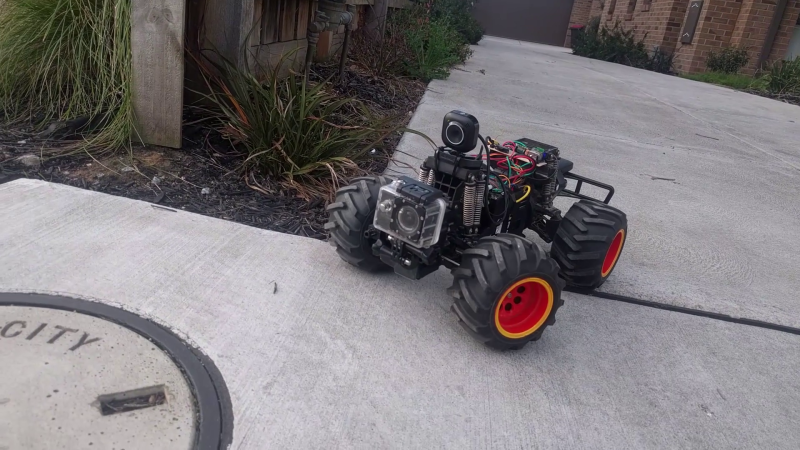Many moons ago, in the shadowy darkness of the 1990s, a young Lewin visited his elder cousin. An adept AMOS programmer, he had managed to get his Amiga 500 to control an RC car, with little more than a large pile of relays and guile. Everything worked well, but there was just one problem — once the car left the room, there was no way to see what was going on.
Why don’t you put a camera on it? Then you can drive it anywhere!
—Lewin
This would go on to inspire the TKIRV project approximately 20 years later. The goal of the project is to build a rover outfitted with a camera, which is controllable over cellular data networks from anywhere on Earth. For its upcoming major expedition, the vehicle is to receive solar panels to enable it to remain operable in distant lands for extended periods without having to return to base to recharge.
The project continues to inch towards this goal, but as the rover nears completion, the temptation to take it out for a spin grew ever greater. What initially began as an exciting jaunt actually netted plenty of useful knowledge for the rover’s further development.
Preliminary Work
Early testing way back in 2016 had already taught us a lot about how the rover performed in the wild. We learned that our MJPEG webcam had poor resolution and used excessive bandwidth for the given video quality. This led us to upgrade the platform to a Raspberry Pi camera, capable of up to 1080p video using the H264 codec. This also came with IR LEDs to enable night driving. It also became apparent that our on/off motor control made it difficult to drive through tight spaces. With an upgrade to a PWM brushed motor controllers, movement can be throttled down to a crawl. A last-minute hack session resulted in adding a crude servo to pan the camera left and right. This greatly helped to navigate the rover through and around obstacles.
The Goal… Not Quite Mars, But Nearly as Fun
Why let space agencies have all the fun, we can drive a robotic platform right here on earth that feels every bit as hard as navigating another planet. The planned mission was a trip from home to the local football oval with the primary goal being to locate and identify the football goals using the onboard camera, with the secondary goal being a successful return to base. As this mission was undertaken in suburbia, there was a moderate likelihood of encounters with pedestrians, so we sent out a runner in order to reduce the likelihood of losing the vehicle in the event of a mishap, but with strict instructions not to interfere in any other case.
On a cool, dry night in August, we gathered just before the stroke of twelve and prepared the machine. Batteries were fully charged, and voice comms set up between the runner and base. TKIRV was …read more
Source:: Hackaday

